The construction of the wonderful canon of logarithms
The construction of the wonderful canon of logarithms
The construction of the wonderful canon of logarithms
Create successful ePaper yourself
Turn your PDF publications into a flip-book with our unique Google optimized e-Paper software.
lo<br />
Construction <strong>of</strong> <strong>the</strong> Canon.<br />
less <strong>of</strong> <strong>the</strong> o<strong>the</strong>r, and <strong>the</strong> greater <strong>of</strong> <strong>the</strong> one to<br />
<strong>of</strong> <strong>the</strong> o<strong>the</strong>r.<br />
Thus let <strong>the</strong><br />
j,<br />
line a b c \>&<br />
divided into two<br />
parts, a b and b c.<br />
a-<br />
<strong>the</strong> greater<br />
Let a b lie between <strong>the</strong> limits<br />
123.5 <strong>the</strong> greater and 123.2 <strong>the</strong> less. Also let b c<br />
lie between <strong>the</strong> limits 43.2 <strong>the</strong> greater and 43.1<br />
<strong>the</strong> less. <strong>The</strong>n <strong>the</strong> greater being added to <strong>the</strong><br />
greater and <strong>the</strong> less to <strong>the</strong> less, <strong>the</strong> whole line a c<br />
will lie between <strong>the</strong> limits 166.7 ^^^ 166,3,<br />
<strong>The</strong> two limits <strong>of</strong> one quantity are multiplied into <strong>the</strong><br />
two limits <strong>of</strong> ano<strong>the</strong>r, when <strong>the</strong> less <strong>of</strong> <strong>the</strong> one is multiplied<br />
into <strong>the</strong> less <strong>of</strong> <strong>the</strong> o<strong>the</strong>r, and <strong>the</strong> greater <strong>of</strong> <strong>the</strong> one into<br />
<strong>the</strong> greater <strong>of</strong> <strong>the</strong> o<strong>the</strong>r.<br />
^ ^ Thus let one <strong>of</strong> <strong>the</strong> quantities a b lie<br />
between <strong>the</strong> limits 10.502 <strong>the</strong> greater<br />
and 10.500 <strong>the</strong> less. And let <strong>the</strong> o<strong>the</strong>r<br />
a c lie between <strong>the</strong> limits 3.216 <strong>the</strong><br />
greater and 3.215 <strong>the</strong> less. <strong>The</strong>n 10.502<br />
being multiplied into 3.216 and 10.500<br />
into 3.215, <strong>the</strong> limits will become<br />
33.774432 and 33.757500, between which <strong>the</strong> area<br />
oi a b c d will lie.<br />
10. Subtraction <strong>of</strong> limits is performed by taking <strong>the</strong> greater<br />
limit <strong>of</strong> <strong>the</strong> less quantity from <strong>the</strong> less <strong>of</strong> <strong>the</strong> greater, and<br />
<strong>the</strong> less limit <strong>of</strong> <strong>the</strong> less quantity from <strong>the</strong> greater <strong>of</strong> <strong>the</strong><br />
greater.<br />
Thus, in <strong>the</strong> first figure, if from <strong>the</strong> limits <strong>of</strong> a c,<br />
which are 166.7 and 166.3, you subtract <strong>the</strong> limits<br />
oi b c, which are 43.2 and 43.1, <strong>the</strong> limits <strong>of</strong> « ^<br />
become 123.6 and 123.1, and not 123.5 ^"^^ 123,2,<br />
For although <strong>the</strong> addition <strong>of</strong> <strong>the</strong> latter to 43.2<br />
and


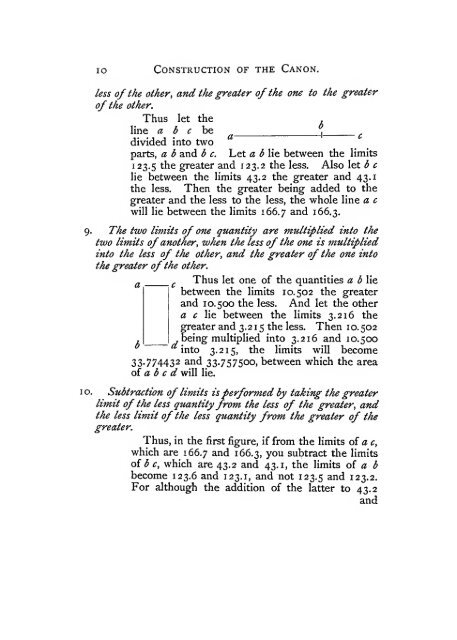
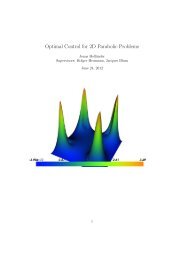
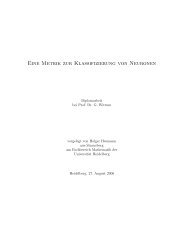
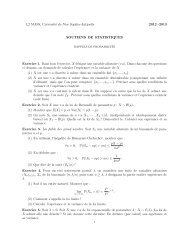
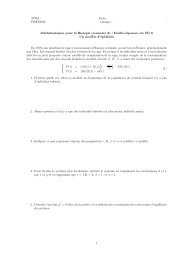


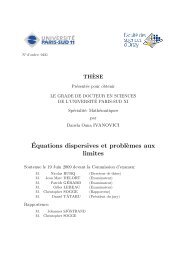
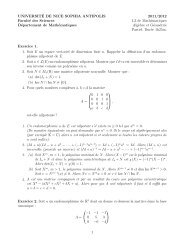
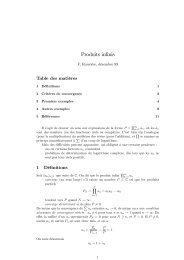
!['eries enti\`eres (+ [D78 Th d'Abel angulaire])](https://img.yumpu.com/14067031/1/184x260/eries-entieres-d78-th-dabel-angulaire.jpg?quality=85)

